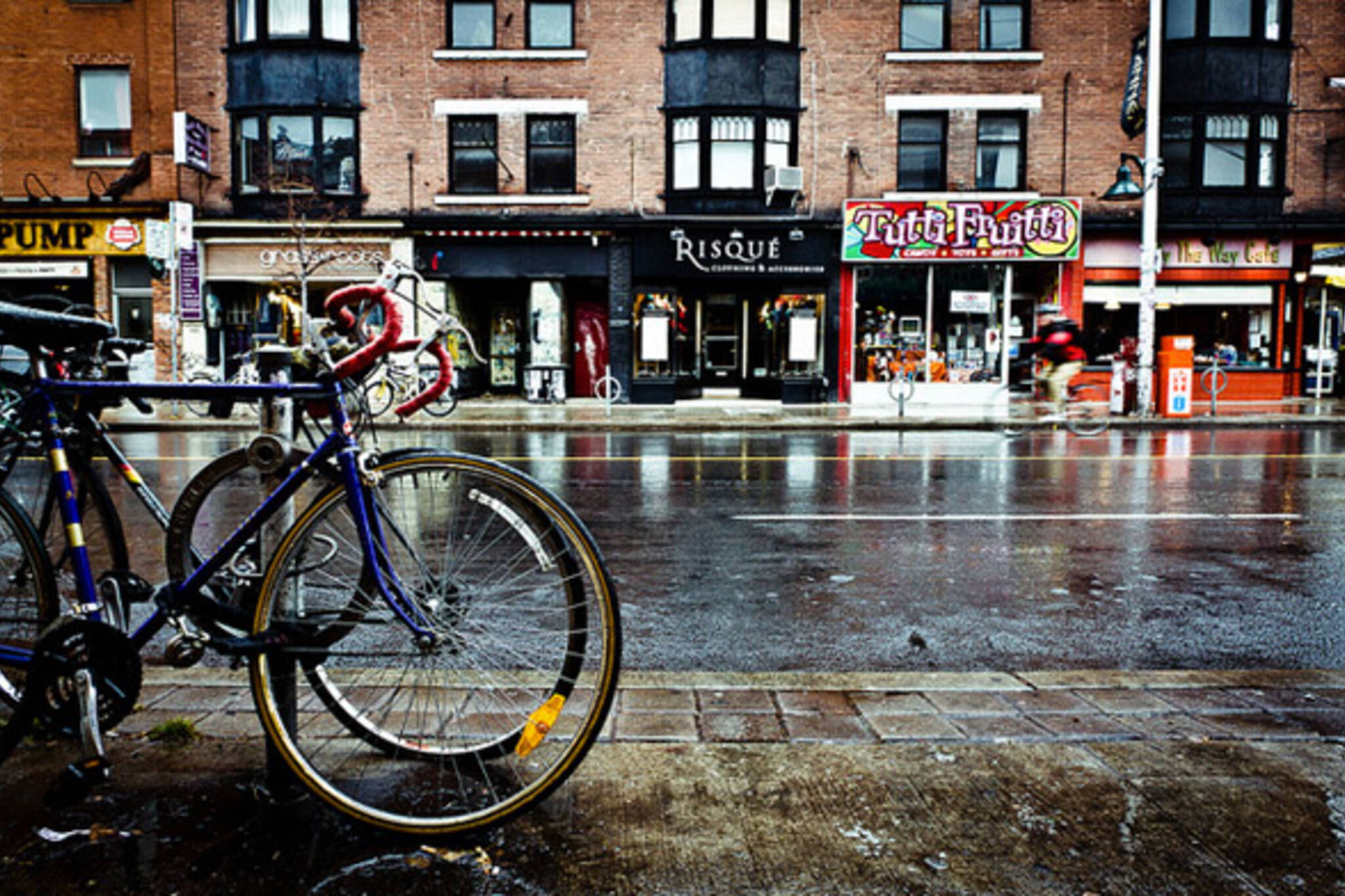
What would Bloor be like with separated bike lanes?
The Annex Residents' Association (ARA), arguably one of the most powerful organizations of its kind in Toronto, is looking to make the neighbourhood it represents more friendly to cyclists. In a recently adopted Cycling Policy (PDF) (which I came across via the Annex Gleaner), the ARA put forward a number of recommendations that would profoundly alter the strip of Bloor Street West between Avenue Road and Bathurst Street.
The most significant of these — which the ARA is careful to point out not all members support — involves the addition of dedicated/separated bike lanes in the area. That such infrastructure would likely necessitate the elimination of on-street parking isn't explicitly spelled out in the document, but given the size and nature of this stretch of road, it doesn't really have to be. If the notorious little section of Harbord just west of Spadina couldn't get regular bike lanes without jeopardizing street parking, it'd take some pretty creative engineering to add separated lanes without doing the same on Bloor.
Interestingly, back in 2009 the Clean Air Partnership completed a study of the Annex (PDF) in an effort to understand and estimate the importance of on‐street parking to business on Bloor Street. Some of the findings might come as a surprise (if you didn't see the report when it came out): only four per cent of the business owners surveyed believed that the majority of their customers arrived via cars, while almost three quarters believed that less than 25 per cent of their customers drove to the area to shop. The study also found that patrons arriving by foot and bicycle spent the most money per month.
A survey like this isn't, however, gospel. One need only recall the successful campaign of store owners on Dundas West to restore rush hour parking between Sterling and Dovercourt roads to understand how important some businesses believe parking is to their livelihood. And, in any case, just because the ARA recommends such infrastructure doesn't mean City Council will follow suit (particularly given its current make-up). Nevertheless, the idea is a provocative one. Could it be that the addition of dedicated bike lanes in the Annex might save the neighbourhood from its corporate turn of recent years? Or would it ultimately hurt the prospects of independent businesses in the area?
The ARA's Cycling Policy also calls for a reduction of the speed limit on Bloor Street to 30 km/h, the addition of contra-flow bike lanes on side streets, the implementation of bike boxes at major intersections (already happening around U of T), and to allow cyclists to roll through stop signs (legally). All of these would make for great additions to an area that attracts a high proportion of cyclists (and don't forget BIXI is on the way). Yet, it's undeniable that the real conversation starter is the prospect of separated bike lanes on Bloor. However remote it is that such infrastructure will be put in place, it's tantalizing to think about the degree to which the neighbourhood would be transformed by such a project.
As to whether this transformation would be for the better or the worse will likely be cause for some debate.
Photo by Ronnie Yip in the blogTO Flickr pool.
Latest Videos
Latest Videos
Join the conversation Load comments







